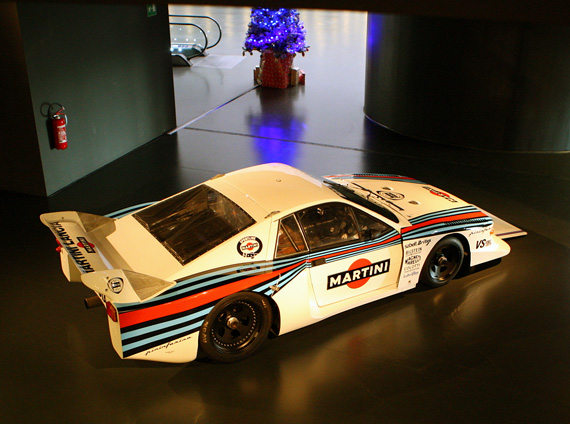
The Beta Montecarlo Turbo, driven by Riccardo Patrese, Markku Alén and Ilkka Kivimaki which won the 1980 Giro Automobilistico d’Italia.
Text and Photos by Jonathan Sharp
Captions by Martini PR and staff
It was always the stripes that caused me problems.
As a child, like most children I would spend hours putting the car kits together, even more hours painting the bodywork, usually using an aerosol paint which made the house stink. Then it came to the Martini stripes. Even though they came as decals there was always one set of stripes that would not sit right on the bodywork no matter how many times you lifted them off and put them back on again. But the picture on the box looked so neat one had to get it right.
I had forgotten how cool they looked until I had made my way through the turnstile entrance of the Museo dell’ Automobile in Turin. Right in front of me was the Martini Racing-striped Lancia Beta Monte Carlo Turbo of 1981- oh those stripes. With the car parked next to a blue lit Christmas tree I wanted to dig out my model making box again and have another go at those stripes.
The reason the Monte Carlo was sitting in the middle of the Museum’s main atrium was because of an exhibition to celebrate the 150th anniversary of the Martini & Rossi Brand and 45 years of Martini Racing. (Exhibit closes January 26th). The cars on display covered the entire history of Martini Racing, starting with the Porsche 917, winner of the 1970 Le Mans 24 hour race,to the 1973 Targa Florio-winning 911 RS, right up to the current Porsche 918 Hybrid race car of 2014.

At Sebring, Vic Elford and Gerard Larrousse led their Porsche 917 to success in the 12 hour race, but the most important victory that year came at Le Mans where Martini Racing celebrated its first ever win in the 24 hour competition, with drivers Marko and Van Lennep.
It was however the Italian cars that drew most of my attention. From the Lancia stable came the previously mentioned Beta Monte Carlo, a couple of 037s, the LC1 and LC2 Endurance racers, various Deltas including the S4, and the totally bonkers 600 bhp ECV 2 which had group B not been banned would have made for one almighty spectacle .
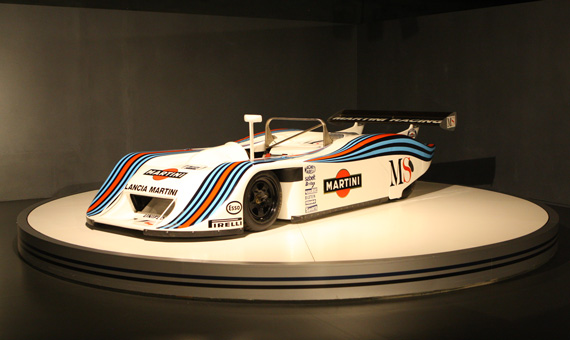
Although the Lanica Martini Racing cars gained numerous victories, the struggle for the world title was confined to the Porsche team. This is the LC-1.
From F1 there was the Pederzani brothers Flat 12 Tecno, a couple of Brabhams, and a Lotus 80. From the Touring car class, there was an Alfa 155 GTA DTM and from the world of modern rallying, a Ford Focus WRC. All the cars were displayed individually on revolving turntables and all beautifully lit. It was not just cars that were on display. The walls were lined with photos and art work which told the story of the teams various endeavors and also of the development of their racing livery. At various points around the display one could watch period films of the cars at work.
All in all, a superb display and done with Italian flair. The Museo dell’ Automobile is a total redefinition of the original Biscaretti, and we’ll have much more on this in VeloceToday in the weeks to come. See the show below.
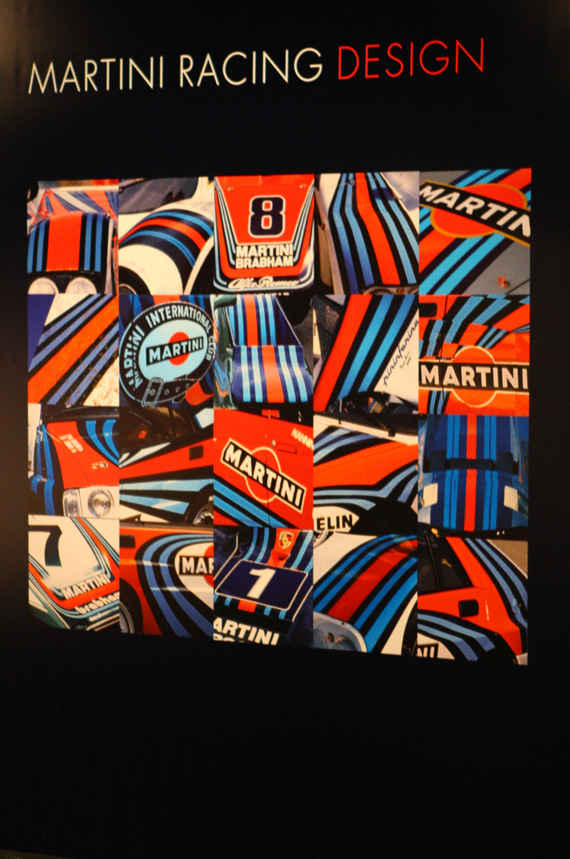
Martini & Rossi livery over the years.The history of Martini Racing began on 4th April, 1968, when the German branch of Martini & Rossi decided to apply its logo to a Porsche 907 belonging to the German BG Racing Team. These were the early days of sponsorship in the motor racing world and the logo passed unnoticed until December 1970, when the Martini Racing Team was officially formed in London.
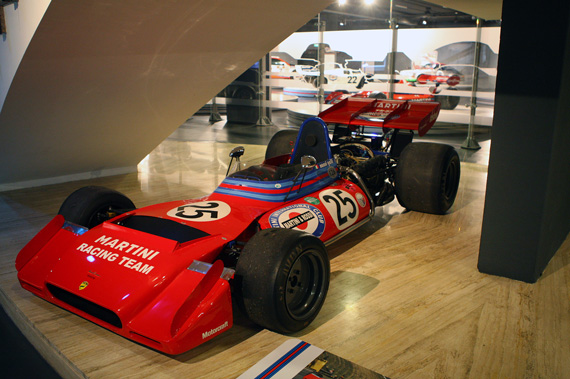
Now won over by their passion for motors, the Martini Racing men turned their sights to Formula 1, deciding to support the brave initiative undertaken by the Pederzani brothers, owners of the Bologna-based firm, Tecno. Having already dominated the young-driver categories, they wanted to make the big jump, and they wanted to do it in the best possible way, using a car of their own construction, a 12 cylinder engine, very similar to the one used by the Ferrari. The chosen drivers were the Italian Nanni Galli and the Englishman Derek Bell.
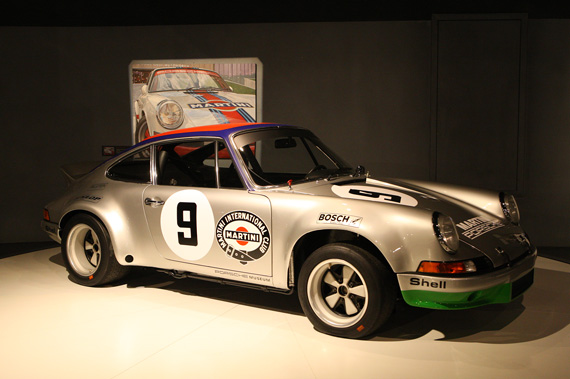
The 911 Carrera RSR, converted from the Gran Turismo series and equipped with a turbo engine, was a total novelty in endurance racing and was received with a certain amount of skepticism by opponents and experts in the field. Everyone was forced to change their mind, however, when, in the same year, a 911 RSR driven by Herbert Müller and Gijs Van Lennep triumphed on the tortuous roads of the legendary Targa Florio race in Sicily.
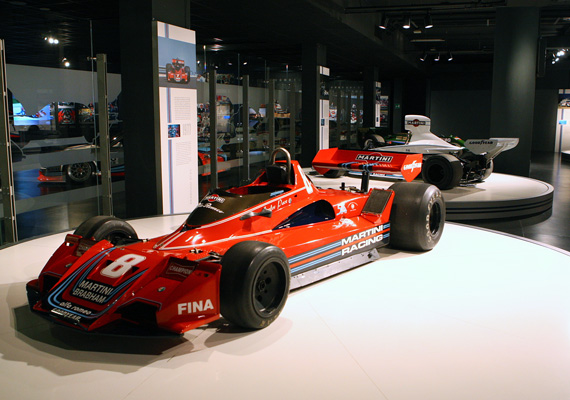
In F1, Martini made a move to Alfa Romeo and the Brabham BT 45 which possessed an excellent 12 cylinder boxer. On paper it was a winning partnership, but problems of reliability and the complicated integration between an Italian engine and an English body prevented Martini Racing from reaping the fruits hoped for in 1976-77.
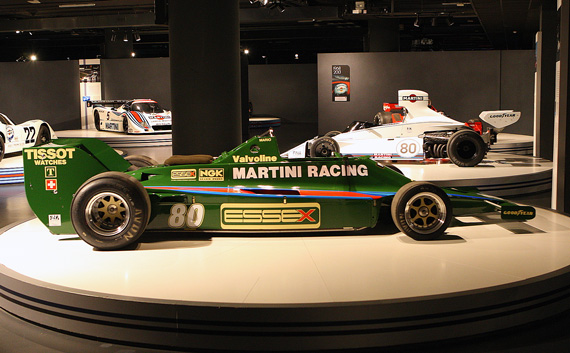
Following a sabbatical year, in 1979 the famous stripes were back in full force in the Formula 1 category, this time with Lotus. Colin Chapman was ready to amaze the world again. Not content with the technical superiority of the “79” model, he went further to produce the “80” model, extending the ground effect to the whole single-seater, equipping it with integrated “miniskirts” which started at the nose and extended to the back of the vehicle, getting rid of the conventional wings. If everything had functioned to plan and if the results from the wind tunnel had corresponded with the performance on the track, it might have outclassed everyone. Instead, exactly the opposite happened: those who had opted for less complex types of construction dominated the season, while the revolutionary Lotus was shelved after just a few races.
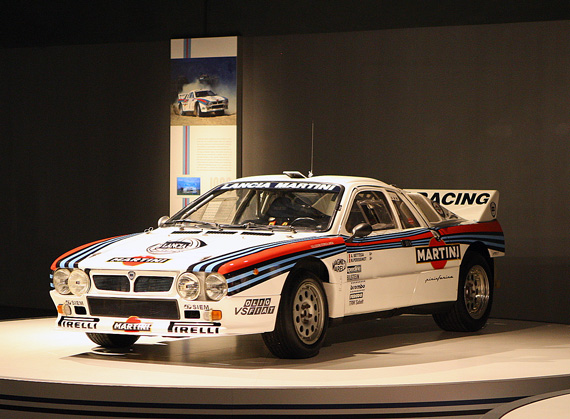
For about a decade the Turin cars ruled rally racing worldwide, beginning with the 037, a compact rear-wheel drive two-seater which, against all the odds, defeated its four-wheel drive opponents and won the 1983 world title. It was Martini Racing’s first world title in this category, achieved with drivers Walter Röhrl, Makku Alen, Attilio Bettega, and Adartico Vudafieri.
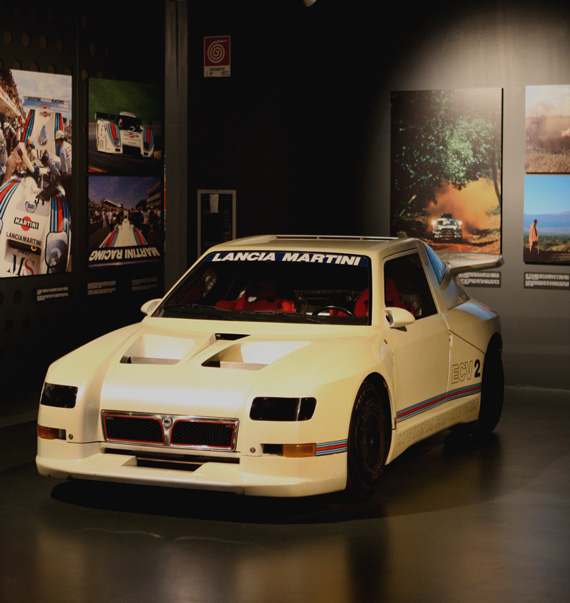
Never raced Lancia ECV2 (Electronic Composite Vehicle) was shown in 1989. With twin turbos, 600 hp and only 2006 lbs, this was an extremely potent machine. It was used as a technological showcase.

The list of Martini Racing achievements was enriched with other prestigious victories in the Gran Turismo series. The team made their debut in this category in 1992, with Alfa Romeo racing two 155 GTA cars driven by Nicola Larini and Alessandro Nannini, two well-known drivers with a brilliant Formula 1 history. Arese’s red berlinetta cars dominated the season and at the end of the year Nicola Larini became the Italian touring car champion. After pulling out of the DTM in 1996, another ten years went by before the Martini logo was seen again on the most prestigious racing circuits. In fact, it was not until 2006 that the Martini Racing stripes appeared unexpectedly on the nose of the most famous racing car on the planet: the Formula 1 Ferrari. And once again this partnership led to victories and world titles.
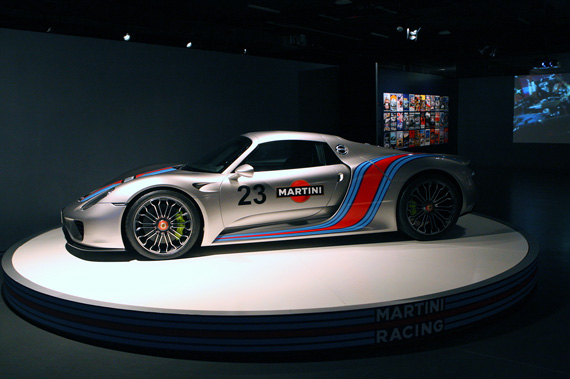
Martini Racing, the brand inseparably tied to the world of motor racing, was back on top. And as if any more proof were needed, this was shown again in 2013, when the Martini Racing colors returned to the flanks of the Porsche 911 GT3 used by Sebastian Loeb in the Porsche Cup, in Montecarlo and Barcelona. And the famous dark blue, light blue and red stripes decorated the nose and flanks of the hyper-technological Porsche 918,
the first high performance hybrid to come out of the Stuttgart firm, shown here.
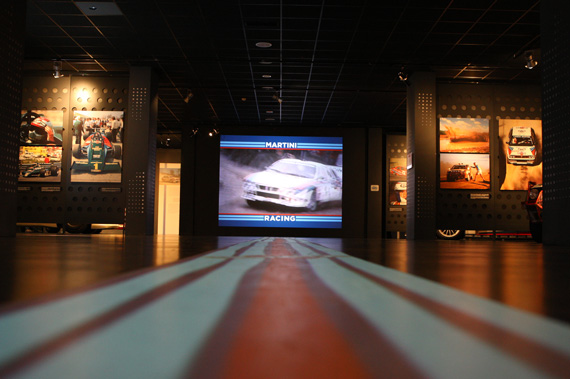
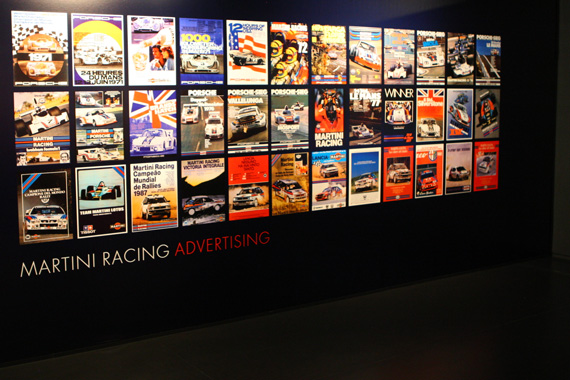
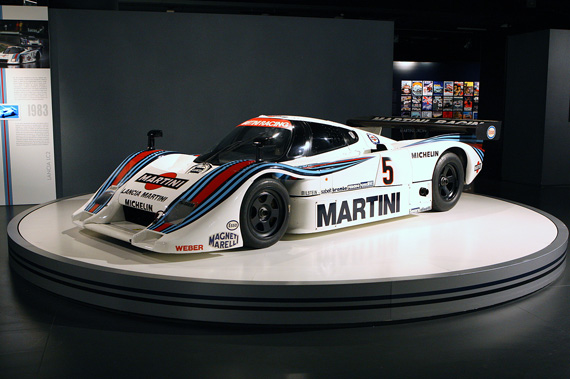
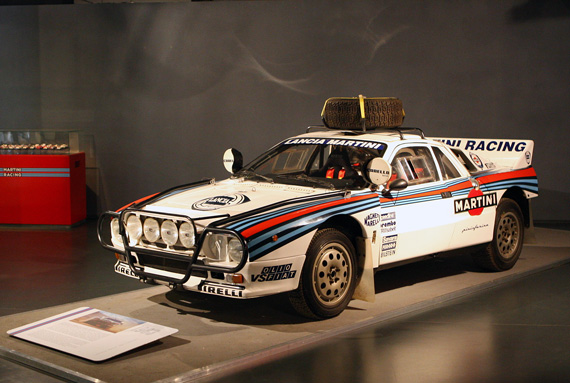
Super thank you Dave !